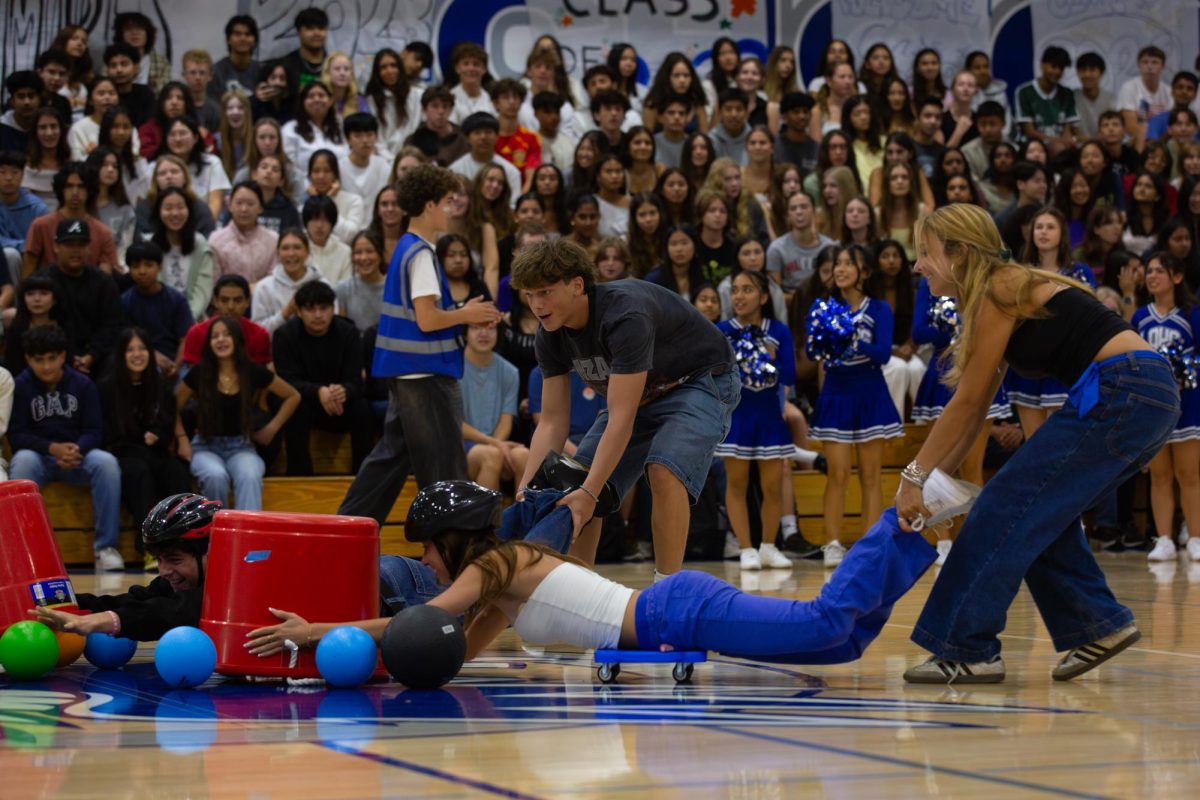ASB brings us together — nominally. Too often, ASB’s merch, spirit week and event decisions have the opposite effect of increasing school pride: making students indifferent. If we’re going to have real school spirit, it’s time to rethink how ASB interacts with the student body.
Merch That Students Actually Want
Students should be proud and excited to wear LAHS apparel, but much of what we see now is unappealing and bland. For example, last year, ASB brought in a new quarter-zip with just the words “Los Altos Eagles” — priced at $40. It seems as though ASB has given this design little thought.
My first reaction upon seeing the new class shirts was that they had been produced by a similar lack of a design process. The freshmen’s baby blue shirt with a logo of an eagle on the front and the word “FRESH-EAGLES” did not strike me as apparel worth $15. To inspire a new wave of school spirit with hundreds of these ill-designed shirts would be less than realistic.
A possible solution to these lackluster designs could have been collaborating with NAHS or the fashion design class, whose members already have experience in creating visually appealing designs. Allowing students the opportunity to showcase their talent would not only enhance the quality of the merchandise, but also make students excited to support their peers’ work.
Accessible Spirit Weeks
Spirit weeks can help foster community and school pride, but not with obscure and inconvenient themes that get in the way of participation. An instance of this was “Aspen Day,” in which students were asked to dress in ski attire on a warm fall day. Only after consulting Google did I learn that Aspen was a ski resort town in Colorado. By not making the theme immediately apparent from the title, students have to figure out what the theme even means. And that’s on top of finding the right clothes or buying items they don’t already own, decreasing the incentive to be spirited. Easy-to-understand themes, like Hogwarts Day, or even stripes and polka dots, invite students to join in and express their spirit creatively.
Clash of the Classes: A Case Study in Poor Planning
Last year’s Clash of the Classes rally serves as an example of how ASB decisions can hurt students’ trust. Sales were pathetic even after tickets were promoted for weeks — less than 10 per class, only a couple of days before the event. The cancellation was postponed until the day before regardless. For students like me who had already rearranged their schedules, this caused frustration and dwindled trust in ASB’s consideration for students’ time. This, in turn, discouraged students from participating in future events, for fear that they would be canceled again and cause inconvenience.
Ticket prices had jumped up to $15, compared to $5 the previous year. As there was no provided explanation for this, we could only assume it was because it included a free shirt. There are two issues with this: the included shirt was sometimes left out of communication, like ASB’s Instagram posts, which led students to believe that the tickets were marked up for no reason. ASB’s meeting minutes also reveal that most of the shirts were $2.54 each, making the markup exorbitant. The simplest solution would have been going back to the old $5 system.
Rotating Class Colors
Perhaps the most ridiculous policy implemented this year is the rotating class colors. This new system was immediately construed by me as a cash grab. It places an unfair burden on lower-income students who may feel excluded when they’re unable to buy a new shirt each year just to participate. This practice makes school spirit feel exclusive and discouraging instead of creating unity. When colors remained consistent for four years, students built connections with their color, proudly wearing their shirts from their first rally well into senior year. Changing the colors annually disrupts that sense of continuity.
While it is true that the admin made this decision, ASB has shown before that it can advocate for students when it matters. An instance of this was during the Clash of the Classes lunch inflatable activities, when the administration initially opposed it out of concern for being held liable for students’ injuries. ASB, knowing that students would enjoy it, pushed back, resulting in a compromise of keeping the inflatables but requiring waivers. If ASB could balance student needs with admin expectations then, it surely could have done the same against a policy that so clearly undermines school spirit, excludes low-income students and discourages participation.
These are not insubstantial issues — they have a direct impact on how students perceive ASB and whether we’re eager to participate in school community events. By putting more thought in school merch, selecting clear and convenient spirit week themes, being responsible with events and communicating more transparently, ASB can restore credibility and improve school spirit. We just need a reason to think our time, money and dedication isn’t being wasted.




